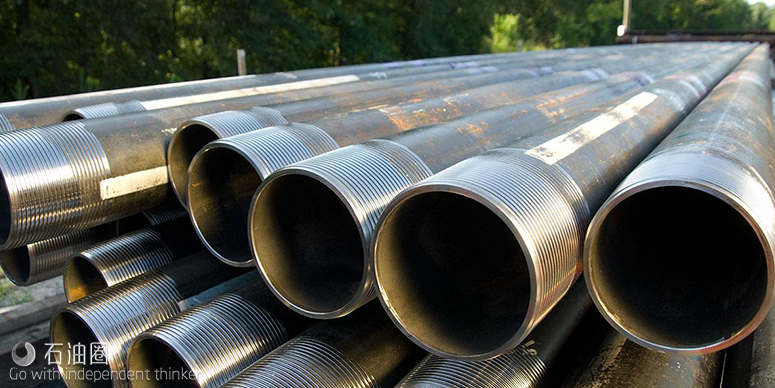As a typical challenge associated with highly deviated, Horizontal or ERD wells, during the ‘conventional’ (non-rotating slack-off mode) completion deployment, axial friction will be generated and cumulated along the string against the borehole. While progressing into the well, the friction will consume (a part of) the available weight from surface. The compression of the string can lead to helical buckling and lock-up, preventing any further progress and compromising the entire completion of the well far above TD.
If proper wellbore conditioning and hole cleaning are the mandatory legacies of the drilling operations ahead of the casing and completion deployment, multiple approaches and technologies can be considered and combined to reduce the friction during the deployment.
Hydraulic approach: Using Mud lubricants
Mechanical Approach:
- Reduction of the friction coefficient at the contact point with the wellbore (Low Friction Centralizers & Subs technologies)
- Providing more weight available from surface (Heavy weight drill pipe,…)
- Decreasing the weight of the completion to be deployed (Floatation, Aluminium pipe and casings technologies)
- Providing reaming and hole cleaning capabilities to the string (Reaming shoes,…)
- Displacing a portion of the friction from a pure axial drag mode to a torsional component by inducing string rotation.
Depending on the application specifications and operator objectives, some of these options might not be applicable; or not providing sufficient improvement due to their limitations.
Among these, the string rotation, through the potential capability to displace a significant portion of the friction – ultimately all – from the axial to the torsional component, together with the distance on which this effect is applied, provides the most significant impact in drag reduction, string compression limitation and available hookload.
The following figure illustrates the progressive friction displacement from a pure axial slack-off mode (left hand side) to a pure Static Rotational Mode (right hand side)
During the string deployment, friction will be developed at the contact points of the string with the wellbore, where side forces are generated. Friction will develop in the opposite direction of the motion direction.
In pure slack-off mode, the string motion is purely axial. Friction will then be fully oriented against the axial motion and seen as drag, which will result in hookload reduction. (left hand side)
In pure static off-bottom rotation mode, the friction will be developed on the tangential direction exclusively. Frictional torque will then be developed, cumulated along the string and measured on surface. (right hand side)
With both axial and rotational motion, friction will be split between 2 components, Axial and Tangential, respectively seen on the Axial Hookload and the Torque. Their respective contributions will be driven by the Axial (Tripping) Speed vs Tangential (Rotational) linear speeds at the tubular / borehole contact point. In the perspective of Axial Drag reduction, the higher the rotational speed and the lower the tripping speed then the lower the drag component will be, but the higher the frictional torque will get.
Practically, the operational limitations will come from the torsional capability of the string (connections ratings, top drive capability) and from the deployment of sensitive equipment, which often, doesn’t allow the full string to be rotated.
What if you could selectively rotate only a portion of the string ?
In such a configuration, RotationABILITY™ will be driven through the integration of SwivelMASTER® Technologies within the string. The SwivelMASTER Technologies will allow the selective rotation of the string above it (upper string), disconnecting the rotation of the string below it (lower string). Significant drag reduction can be achieved through the upper string rotation, while keeping the cumulative frictional torque below the torsional limitations of the string.
Over the last few years, along with the development of significant ERD wells around the globe, the Single Shot ‘Drill Pipe’ SwivelMASTER technology successfully provided significant drag reduction by allowing the running string to be rotated when deploying long lower completion liners. The ‘Single Shot’ Drill pipe SwivelMASTER is then run at the bottom of the running string and retrieved after the Liner Hanger is successfully set and released. So far, more than 700 runs have been completed around the globe.
With the objective of providing further drag reduction (pushing the rotation point deeper into the string), a “CasingSWIVEL™” can now be included as an integral part of the production liner or casing, left in hole when getting to TD. This technology is part of the key enablers in the successful deployment of 20,000+ ft long 6 5/8’’ production liners in Giant Offshore ERD field development, as illustrated here below.
This 16,500+ ft long 6 5/8’’ pre-perforated liner was run smoothly down to 27,839ft MD, showing low overall Friction Factor. From that depth, drastic hookload reduction was observed, ultimately leading to the completion string, including multiple Swell Packers, to be stuck, 2,738ft above TD, compromising the full completion of the well.
The selective rotation of the ‘upper’ string (Drill Pipes & Blank 6 5/8’’ liner joints), with a CasingSWIVEL located 12,900ft above the shoe, allowed substantial gain of available hookload (100,+ Klbs in this case), securing the production string to be deployed down to Target Depth.
Besides the capability offered by the RotationABILITY™ concept to ensure the string can be deployed at TD despite unpredicted challenges, this technology is now fully integrated at the Well Planning stage to maximize the Reservoir Exposition, while reducing the overall well construction costs.
RotationABILITYTM empowers the Well Engineer to maximize the reservoir exposition while reducing the overall well construction costs.
- Deliver high quality, smooth, borehole through the reservoir while managing challenges associated with horizontal sections / extended reach profiles – the new norm.
- Increase the deployment capabilities (longer horizontal sections) and ensure completions deployment to Target Depth.
- Enhanced zonal isolation, main driver for productivity optimization and long-term wellbore integrity
- Maximized operational efficiencies, minimizing risks and mitigate unplanned operational challenges, reducing flat time and hidden NPT to deliver within AFE objectives.

 石油圈
石油圈
